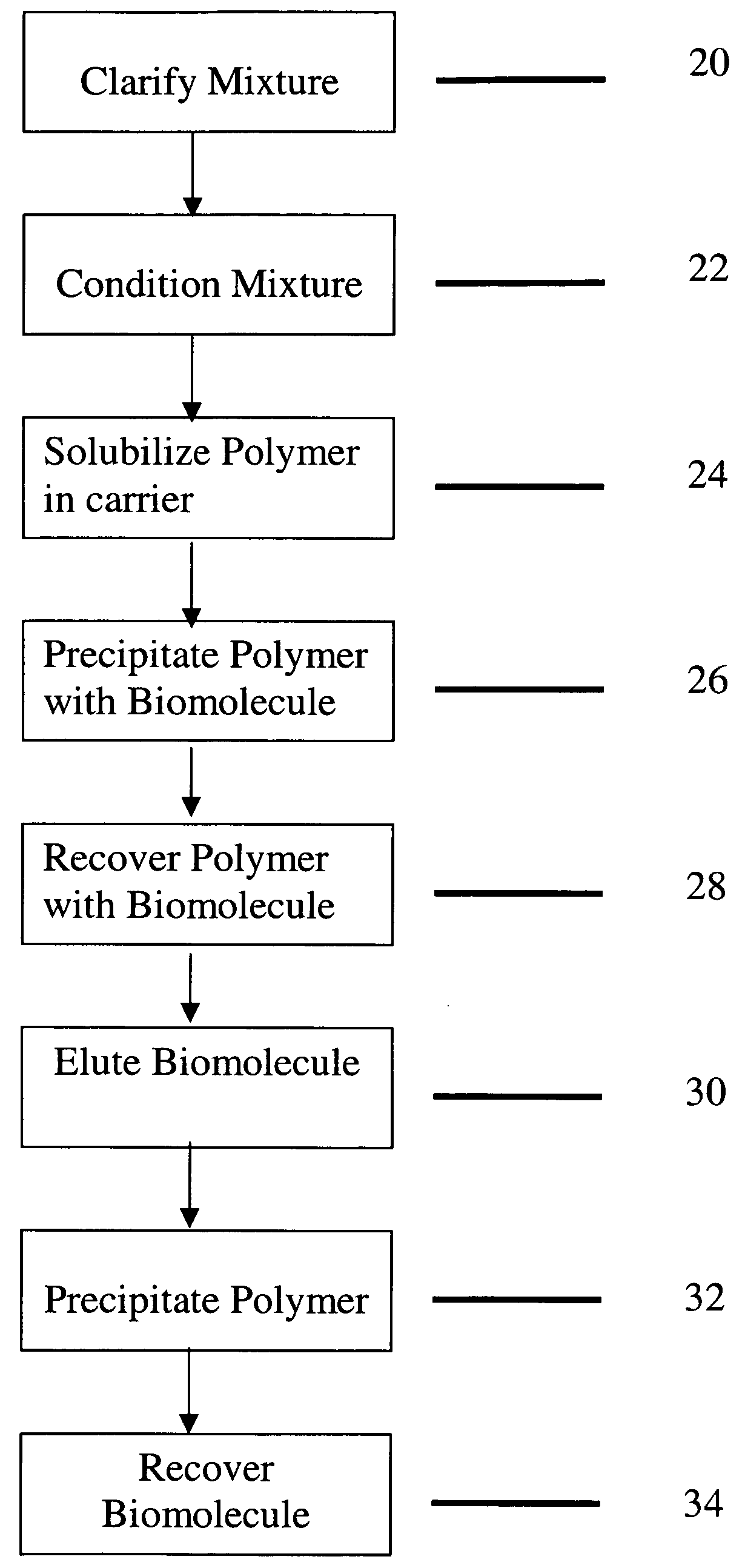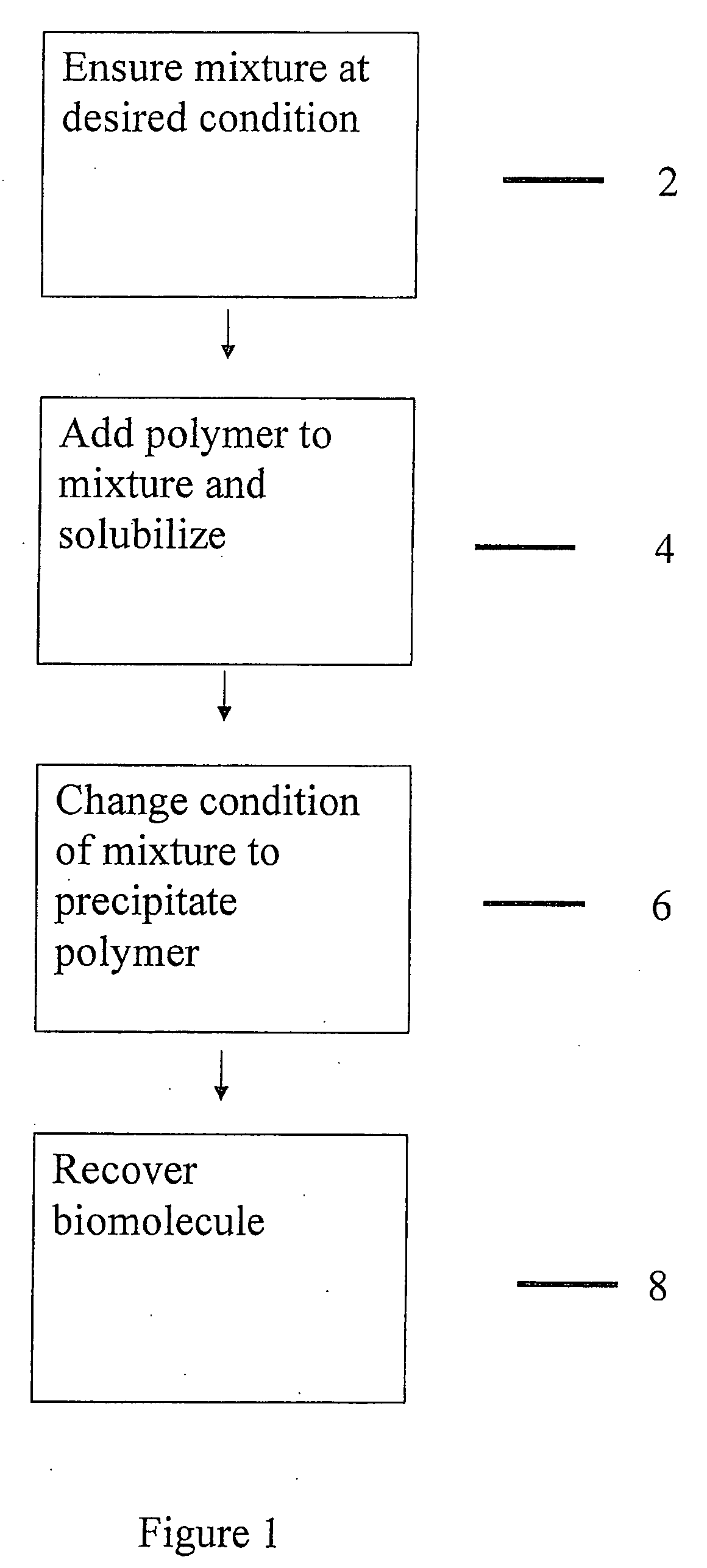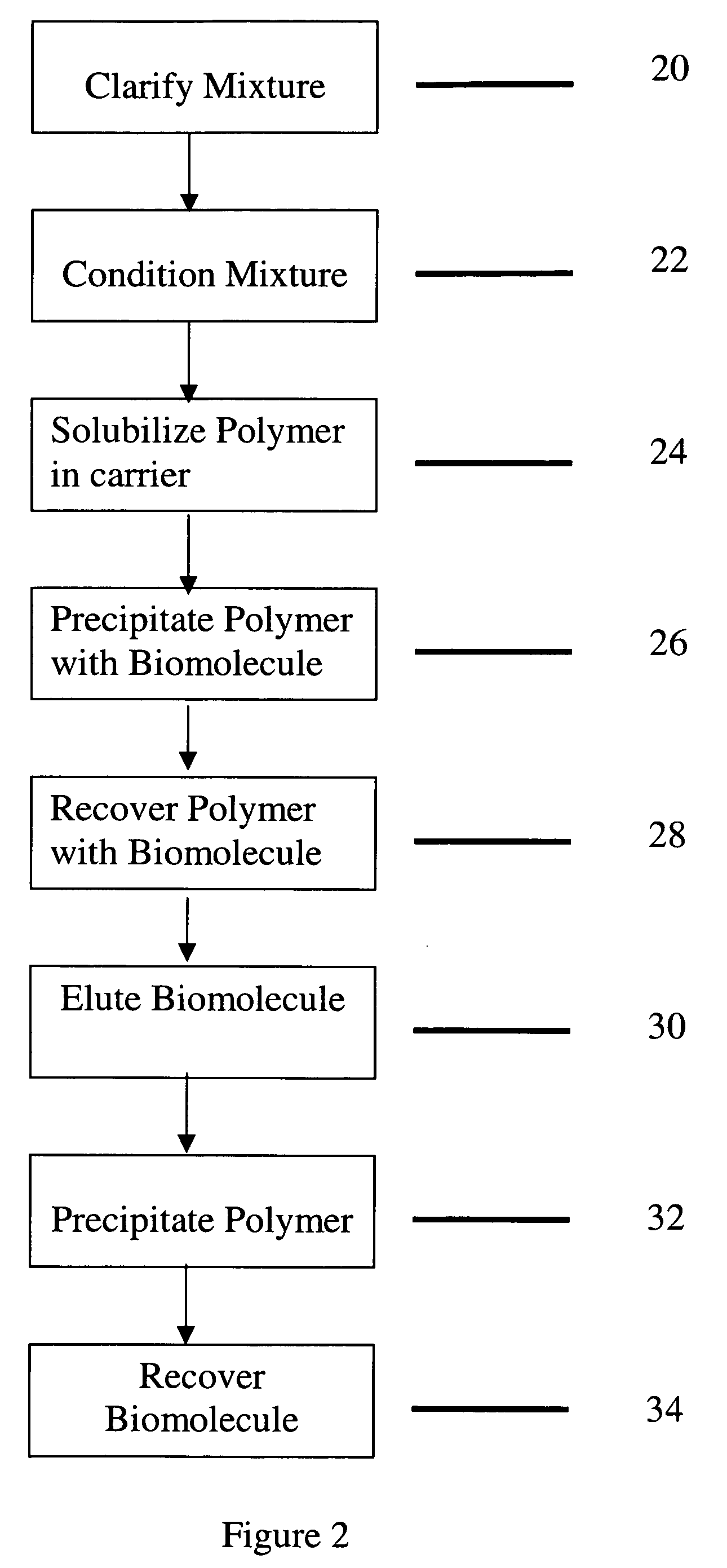Purification of proteins
a technology of proteins and purification, applied in chemical/physical processes, peptides, water/sewage treatment by ion exchange, etc., can solve the problems of impossible removal of excess polyelectrolyte, difficult to predict exact level of impurities in broth, etc., and achieve the effect of enhancing the uf (charged uf) process
- Summary
- Abstract
- Description
- Claims
- Application Information
AI Technical Summary
Benefits of technology
Problems solved by technology
Method used
Image
Examples
example 1
[0137]This example illustrates the capture of monoclonal antibody from a clarified feed using poly(4-vinyl pyridine-co-styrene) (10 mol % styrene).
[0138]0.1 g of the polymer (10% wt in 1 M HCl) was added to 10 ml of clarified 1 feedstock containing an anti-NIP antibody (pH 4.0) and mixed at room temperature for 10 min. The polymer was then precipitated by adjusting the pH of the mixture to around 7.0. The precipitate, in the form of a dispersed solid suspension, was mixed continuously for 30 min in the clarified feed to allow for complexation with the desired product. The precipitate was then collected by centrifugation (4000 rpm for 1 min) and washed with DI water to remove adhering impurities. Re-solubilization of the precipitate and elution of the product took place at pH 3.0. Reprecipitation and removal of the free polymer was affected by adding 100 mM sodium perchlorate followed by filtration through 5 and 0.2μ Millex® filters available from Millipore Corporation of Billerica, ...
example 2
[0140]This Example illustrates the purity of a solution containing a desired biomolecule that was captured using poly(4-vinyl pyridine-co-styrene).
[0141]The feed of Example 1 was used in this example.
[0142]0.1 g of the polymer (10% wt in 1 M HCl) was added to 10 ml of clarified feed (pH 4.0) and mixed at room temperature for 10 minutes. The polymer was then precipitated by adjusting the pH of the mixture to around 7.0. The precipitate, in the form of a dispersed solid suspension, was mixed continuously for 30 min in the clarified feed to allow for complexation with the desired product. The precipitate was then collected by centrifugation (4000 rpm for 1 min) and washed with DI water to remove adhering impurities. Re-solubilization of the precipitate and elution of the product took place at pH 3.0. Removal of the free polymer was affected by adding 100 mM sodium perchlorate followed by filtration through 5 and 0.2μ Millex® filters.
[0143]An ELISA assay kit (Cygnus CM015, lot 17077) wa...
example 3
[0145]This Example illustrates the level of DNA in a solution containing a desired biomolecule that was captured using poly(4-vinyl pyridine-co-styrene).
[0146]The experiment was carried out as illustrated in example 2. The quantification of DNA in the different steps of the capture process was carried out by Pico-Green assay. Each sample was assayed using several dilution factors to assess dilution recovery. In addition, DNA was spiked into each sample to increase the concentration by 0.1 ug / mL, and spike recovery was assessed at each dilution. Good dilution recovery was observed for most of the samples, and spike recoveries were generally within the acceptable range (75%-150%).
[0147]As depicted in FIG. 4, the levels of DNA in the clarified feed and eluant were 0.4 ug / mL and 0.05 ug / mL respectively. Thus, the eluant from the capture process contains ˜10-fold less DNA.
PUM
| Property | Measurement | Unit |
|---|---|---|
| pore size | aaaaa | aaaaa |
| pore size | aaaaa | aaaaa |
| pore size | aaaaa | aaaaa |
Abstract
Description
Claims
Application Information
 Login to View More
Login to View More - R&D
- Intellectual Property
- Life Sciences
- Materials
- Tech Scout
- Unparalleled Data Quality
- Higher Quality Content
- 60% Fewer Hallucinations
Browse by: Latest US Patents, China's latest patents, Technical Efficacy Thesaurus, Application Domain, Technology Topic, Popular Technical Reports.
© 2025 PatSnap. All rights reserved.Legal|Privacy policy|Modern Slavery Act Transparency Statement|Sitemap|About US| Contact US: help@patsnap.com



